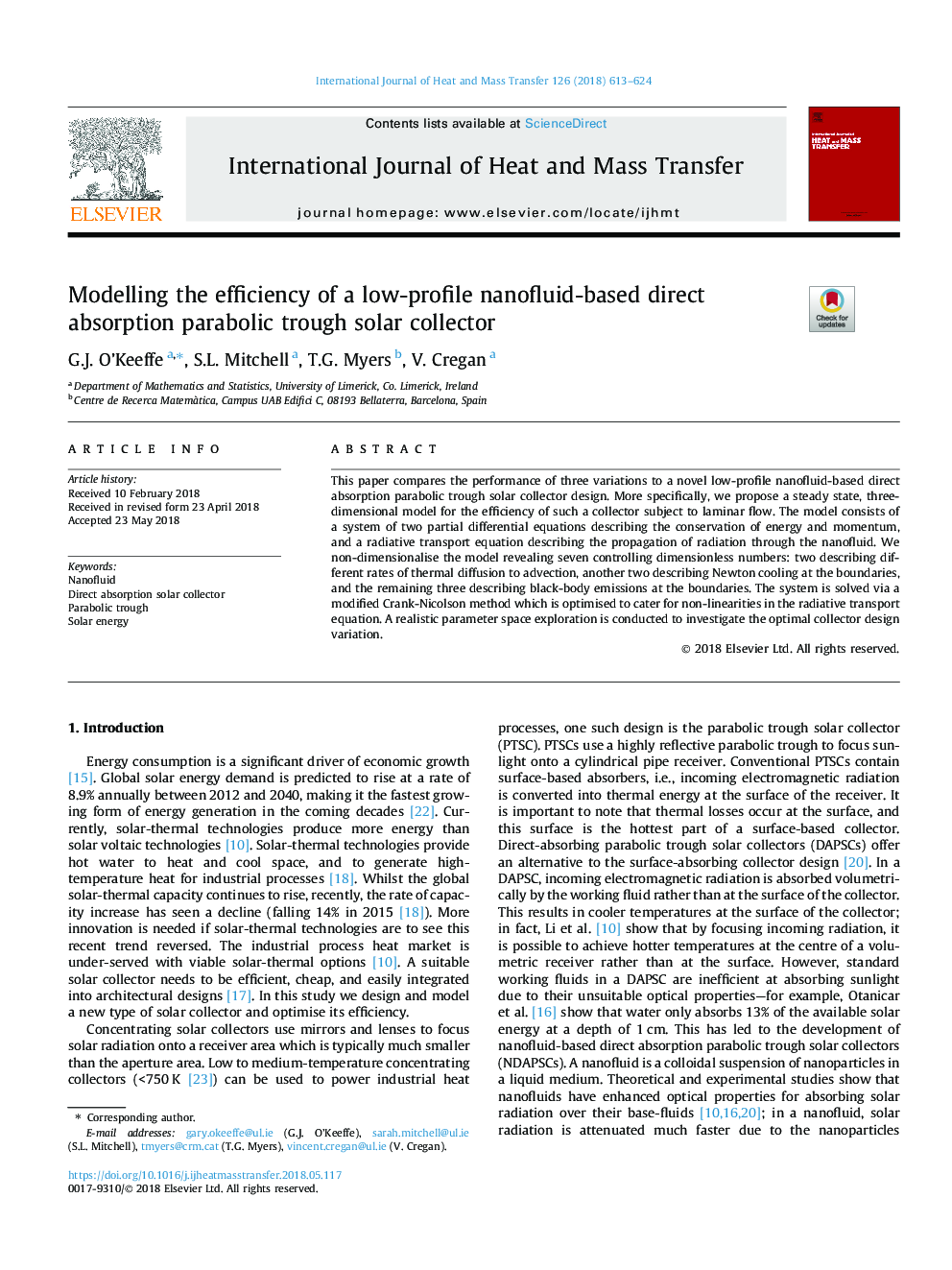| Article ID | Journal | Published Year | Pages | File Type |
|---|---|---|---|---|
| 7053896 | International Journal of Heat and Mass Transfer | 2018 | 12 Pages |
Abstract
This paper compares the performance of three variations to a novel low-profile nanofluid-based direct absorption parabolic trough solar collector design. More specifically, we propose a steady state, three-dimensional model for the efficiency of such a collector subject to laminar flow. The model consists of a system of two partial differential equations describing the conservation of energy and momentum, and a radiative transport equation describing the propagation of radiation through the nanofluid. We non-dimensionalise the model revealing seven controlling dimensionless numbers: two describing different rates of thermal diffusion to advection, another two describing Newton cooling at the boundaries, and the remaining three describing black-body emissions at the boundaries. The system is solved via a modified Crank-Nicolson method which is optimised to cater for non-linearities in the radiative transport equation. A realistic parameter space exploration is conducted to investigate the optimal collector design variation.
Related Topics
Physical Sciences and Engineering
Chemical Engineering
Fluid Flow and Transfer Processes
Authors
G.J. O'Keeffe, S.L. Mitchell, T.G. Myers, V. Cregan,
